- Home
- Darrell Maloney
An Undeclared War (Countdown to Armageddon Book 4)
An Undeclared War (Countdown to Armageddon Book 4) Read online
Countdown to Armageddon: Book 4
AN UNDECLARED WAR
By Darrell Maloney
This is a work of fiction. All persons depicted in this book are fictional characters. Any resemblance to any real person, living or dead, is purely coincidental. Copyright 2014 by Darrell Maloney
A Recap of Book 1 of This Series,
COUNTDOWN TO ARMAGEDDON
Scott Harter was nothing special. Just an ordinary guy living in the suburbs with a typical family and a dog named Duke.
If anything set Scott apart from everybody else, it was his extraordinary luck. All his life, he seemed to be in the right place at the right time. He’d started his business at just the right moment, getting in early on what would become a booming self storage industry. He seemed to know when and how to play the stock market so that his money grew at a steady pace.
And he took most of it out of the market to invest in real estate. Just before the market took a huge downturn in 2007.
It was also his good luck that drove him to dig inside a storage locker when its renter defaulted on his contract.
And maybe just a little bit of curiosity as well.
What he found in the locker didn’t make much sense at first. Some old maps of the heavens. A lot of literature about the Mayans. And a journal, left behind by an old college professor who seemingly vanished from the face of the earth.
Scott read the journal. And the more he read, the more concerned he got.
“The Mayans never said the world was going to end,” the old professor wrote. “They said that December 21, 2012 started a new era. An era they called ‘the last period of progress.’”
The implications were worrisome, and drove Scott to investigate the clues the mysterious professor had left behind. He’d noted that the Mayans had identified every one of the planets and all their moons, even though they had no telescopes. The Mayans learned to predict earthquakes and tidal waves. Modern scientists still couldn’t do that, even with all their knowledge and fancy equipment.
And then Scott found the answer he’d been looking for. It turned out the Mayans could also predict solar flare activity. They discovered that solar storms, like most other things in the universe, run in cycles. Just as earth had seasons of increased storm activity, so did the sun.
But unlike earth, which has a hurricane season each year, the sun’s storms happened less frequently. Every two hundred years, give or take a few.
The professor noted that in 1820, a mysterious thing happened on a global scale.
Millions of people around the world suddenly felt nauseous and disoriented. Many of them threw up or fainted. Farm animals lost their balance and fell over.
Doctors at the time had no answers for the malady. But it only seemed to last for a few hours, and left no long term effects. So it went down in history as one of those things man just wasn’t meant to understand.
The Mayans also foresaw the coming of technology. Archaeologists had deciphered Mayan hieroglyphics that spoke of machines which would allow man to travel about without the aid of animals. They even described airships and radio waves.
And the Mayans seemed to understand somehow that the reason the 1820 event would cause no real harm was because there were no powered machines.
But during the “last period of progress,” there would be plenty of them.
And just as the Mayans had seen the planets and their moons without the aid of telescopes, they also knew, beyond all reason, that the cyclic solar activities around the year 2020, give or take a few years, would cause unfathomable damage.
But not to people. The people might get sick or dizzy. That would be a minor inconvenience.
The machines, on the other hand, would take the big hit. For when the massive solar flares sent electromagnetic pulses streaming toward the earth at half a million miles an hour, it would affect anything electric. Or electronic. And while humans and other mammals might just throw up or feel faint, the machines would be shorted out.
Forever.
But Scott did his homework, and his research. He discovered that scientists had long before developed something called a Faraday cage. A Faraday cage had the capability of protecting electronics and electric items from the electromagnetic pulses, or EMPs.
And he figured out how to build a modified version of the Faraday cage.
Scott knew that when the EMPs bombarded the earth, everything with circuits and batteries would cease to function. All the vehicles on the roads would stop dead in their tracks. Airplanes would fall from the sky. The entire world would experience an immediate blackout.
People would wonder why their televisions and lights no longer worked. They’d try to call the power companies to complain. But their cell phones wouldn’t work either. They’d get into their cars and their cars wouldn’t start.
And the world would quickly descend into chaos.
It was an ugly vision.
But with the mysterious professor’s notes and the research Scott did at the library, he had the tools he needed to prepare for the inevitable. He had the know-how and the drive. What he didn’t have was the time.
A big problem, as Scott saw it, was that the Mayans weren’t very specific. The professor said that the solar storms came about every two hundred years. He’d commented in his notes that it was akin to predicting on which day the first snowstorm of the winter might come. It was obviously coming. But pinning it down far ahead of time was just a little bit harder.
Once the window opened on December 21, 2012, it might be a day before the EMPs hit. Or it might be several years.
Scott had been a pessimist pretty much his entire life. So he did what was prudent. He hoped for the best. But he expected the worst.
He enlisted the help of his girlfriend, Joyce, and borrowed from the bank to purchase a section of land in the hill country above San Antonio. It was far enough away from the city to be safe from the turmoil that would engulf the urban areas. It was also rural enough to be able to grow crops and raise livestock.
For the better part of two years, the pair worked against the clock, praying each day that the EMPs would hold off a little longer, until they were finished.
Finally, their compound was ready to occupy. They’d prepared a large field for growing crops. Enlarged a small playa lake and diverted a stream to fill it; then stocked it with fish.
They’d built a tall security fence around most of the compound, to hide the fact that they were keeping cattle, pigs, chickens and rabbits on the inside.
And most importantly, Scott built a huge Faraday cage, the size of a two car garage. Inside the cage he’d placed the small things they’d need to carry on the lives they’d become accustomed to. The television sets and microwaves and video games.
And the important things, too. Batteries. Spare parts to get the vehicles running again. Spare pumps and transformers and surveillance cameras.
On the day the EMPs came, Joyce and the rest of their small group were all in San Antonio, ninety miles away from their safe haven. Everyone except Scott, who was still at the compound.
It was a school day, and Scott’s boys were in class when the lights went out.
They were well versed on what to do. Scott had drilled them many times. They each removed a black backpack from their lockers and headed for their house in the suburbs. On foot.
Inside the backpacks were water and food for their journey, and a tiny Faraday box containing a walkie talkie and batteries.
The boys’ mother Linda was sitting in traffic when her car died. She looked around at dozens of other motorists getting out of their cars and cursing. Then
raising their hoods and scratching their heads. And she noticed that the stop lights were no longer working. Neither was the marquee outside a movie theater she’d been reading a few moments before.
Joyce, Scott’s girlfriend, walked out of her darkened office just in time to see a commercial airliner fall from the sky.
They all knew what had just happened. And they knew what they had to do.
Coming from all different directions, the group gathered at Scott’s home in north San Antonio.
And they had an unexpected guest. Scott’s oldest son brought his girlfriend, Sara.
“Her parents are in St. Louis,” he’d explained. “I couldn’t leave her all alone to fend for herself. She wouldn’t make it.”
The group welcomed Sara as one of their own. But Linda, the boys’ mother and Scott’s ex-wife, could see that Sara had a secret she was keeping.
Scott, meanwhile, had removed a four wheel drive utility vehicle from his Faraday barn and was high-tailing it south, following a string of high tension power lines that would never work again.
He was ninety miles away, and wouldn’t make it until after nightfall.
Once the group was together in the city, they spent the next day preparing for their long journey back to the compound. Knowing it was too dangerous to travel during the day, they napped and waited for the darkness.
When night fell the second night after the blackout, the riots started all over the city.
But this group of six, and a black lab named Duke, were headed out, slowly working their way north to the compound. Traveling in a group slowed them down. It took two full nights to get there, but when the sun broke over the horizon at the end of that second night, they were safe.
The world around them was going mad. In the cities, people were outraged at the electric companies for not having the power back on. The water was no longer flowing, and people were getting desperately thirsty. They were angry and looking for someone to blame.
The vehicles weren’t running any more, and the streets were littered with abandoned cars and trucks.
Even the police and fire crews were helpless, and having to resort to riding commandeered bicycles to help those they could get to.
All the ugliness of mankind came out. The looting started, and then the violence. Buildings were set on fire and cars were overturned. The decent people holed themselves up in their houses. The bad roamed the streets, looking for whatever they could plunder.
At the compound, the group of six was safe. But there was a lot to be done.
A Recap of Book 2 of the series,
AFTER THE DUST SETTLED
Things went relatively smoothly at the compound. The group fell into a normal routine, although at times they felt like the city girl in the old television show Green Acres. “Goodbye, city life!”
They transitioned into a farming and ranching lifestyle. With the help of Tom Haskins, their one and only neighbor, they learned to plant and harvest crops, and how to care for livestock.
That wasn’t to say it was easy. They learned first hand that the old adage about a farmer’s work never being done was indeed true. Especially since they’d neglected to plan for farming on a large scale.
The cost of seed planters and harvesters wouldn’t have made it prudent to buy them just to plant a single acre of crops anyway. Even if they had been able to afford them. So they opted for the old fashioned way. Planting, irrigating, and harvesting an acre of corn by hand. Then doing the same with an acre of wheat.
The planting process alone took all of them working from dawn to dusk an entire week to finish. A whole week of crawling around on hands and knees, getting filthy, then stumbling to bed unable to stand up straight.
Zachary summed it up best by observing, “No wonder farmers know so many cuss words.”
There were other difficulties as well. The secrets that Sara had been keeping finally came out. And she had a new one too. But this one wouldn’t remain secret for long, as her midsection began to expand and she outgrew her clothes item by item.
She was terrified that the group would send her away, to have the baby on her own in a cold and cruel world. But they surprised her. They treated her better than her own parents ever had. And they made it clear to her that she and the baby were part of their family now. And that she would never be cast out. That she had just as much right to be there as anyone.
Scott developed a close friendship with a San Antonio police officer named John Castro. A war hero, John fought hard to join the SAPD despite leaving half a leg in the burning sands of Fallujah. And he was fighting equally hard to save the city he loved.
Scott and John talked frequently by ham radio. Scott learned that San Antonio was decimated. Less than ten percent of the city would survive the waves of starvation and suicides. Bodies were stacked in the streets and burned until they were merely piles of ashes and bones.
But that wasn’t all. The decomposing bodies had created a pneumonia-like plague that was sweeping through the cities. It was treatable only with massive doses of penicillin, and was ravaging what was left of the population.
John was sure to be infected eventually. He was out among the masses every day, trying to restore order and to bring his city back from the brink. But he was desperate to get his wife and two girls away from the city.
Scott’s group was aware that the citizens of San Antonio were in dire straights. And they wanted to help. So they planted an extra out-of-cycle wheat crop, and harvested it seventy seven days later.
Tom Haskins went to work on a Walmart truck abandoned by the side of the road since the blackout. He was able to get it running, and seventy two boxes of unprocessed wheat were added to the load of food.
Tom and Scott took a harrowing trip back to the city and dropped the load. In exchange for the food, they brought back something even better: John’s wife and daughters.
Then John came down with the plague. He went into a coma because he was allergic to penicillin and couldn’t be treated using the normal protocol. San Antonio was out of an alternative antibiotic. But Tom was able to find some in nearby Junction.
The story ended when Scott made a second run to San Antonio, to drop off the medication that would save his friend’s life.
A Recap of Book 3 of the series,
RISE FROM THE ASHES
THE REBIRTH OF SAN ANTONIO
Unfortunately, Scott didn’t make it back safely. In fact, he didn’t make it back at all. He was ambushed by a gang of thugs who shot him and left him to die.
He was able to crawl back to his house, but Robbie was long gone.
Unable to go any further, suffering from loss of blood and dehydration, he passed out.
He didn’t know that his loved ones back at the compound were desperately worried about him. In a panic, they called Robbie and asked him to search for Scott. He found Scott, near death, and rushed him to a hospital.
Scott recovered fully, but in the process was exposed to the deadly plague sweeping through the city. Although he showed no symptoms, he was told he could be a carrier. And that old people and infants were especially susceptible to the infectious disease.
He opted to stay away from the compound for the few months to a year it would take for the plague to dissipate, instead of risking his newborn grandson. In doing so, he relied on the men and women he left behind to make do without him.
And he volunteered to help his new friends in the San Antonio Police Department try to regain order in the city.
The SAPD was decimated and down to just a few officers. They were resorting to desperate measures, and one of them was recruiting good men regardless of their backgrounds. There was no more police academy. Scott had to learn on the fly, by watching his partners and mimicking their tactics.
Luckily, by this time most of what the police did had nothing to do with enforcing the laws. Most of their duties involved helping the few survivors in a variety of ways.
Scott wore the uniform with pride. He knew it was
only temporary, and he’d never be a “real” cop. But he was making a difference, and it gave him a sense of accomplishment while he waited for the “all clear” that would allow him to return home again.
And now, Book 4 of the series,
AN UNDECLARED WAR
-1-
Scott sat down in front of the ham radio and turned it on.
“Joyce… Linda… whoever’s on duty, this is Scott. Come in.”
“Hi, Scott. This is Linda. How’s stuff and things there?”
“Stuff is okay. Things are a bit under the weather. How about on your end?”
“Everybody’s well here. Who do you want to talk to first?”
“How about Zachary? Our conversation got cut short last time when our generator cut out.”
“Okay, he’s right here.”
“Hi, dad. How are you?”
“I’m fine, son. How’s the reading coming?”
“Oh, man… I get so tired of reading about biology.”
“I know, son. But since we have the books anyway you might as well make use of them. An education is something that’ll always come in handy.”
“I know, dad. It’s just that…”
Zachary stopped talking momentarily, and Scott thought he’d lost the signal.
But Zachary merely got distracted, his finger still on the microphone key.
And simultaneously, Scott heard several things come over the radio’s speakers.
He heard Joyce yelling, “Oh, my God! We’re being attacked!”
He heard Linda say, “They’re coming in through the corn field. Sara, get the kids to the basement.”
And, most ominously, he heard the sound of gunfire, and of bullets hitting the house, just before Zachary released the microphone key.
Then, nothing but dead air.
The war had begun.
John, in the kitchen making coffee, heard the same chatter over the radio and was already on his way to the bedroom.

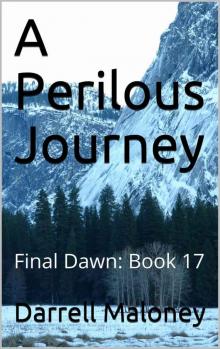 A Perilous Journey
A Perilous Journey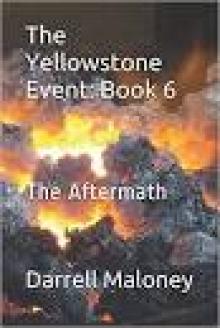 The Yellowstone Event: Book 6: The Aftermath
The Yellowstone Event: Book 6: The Aftermath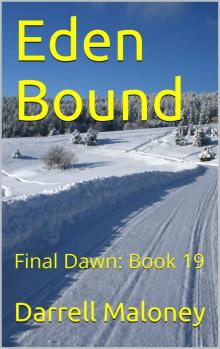 Eden Bound
Eden Bound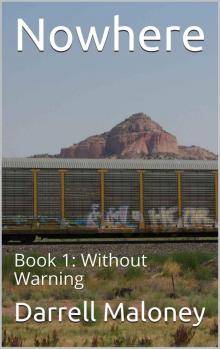 Without Warning
Without Warning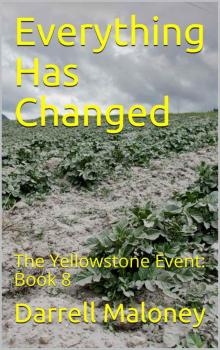 Everything Has Changed
Everything Has Changed Rest in Peace
Rest in Peace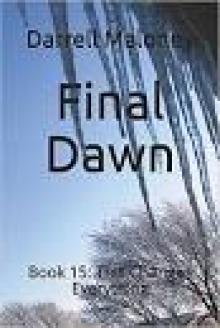 This Changes Everything
This Changes Everything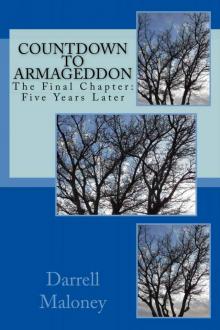 The Final Chapter
The Final Chapter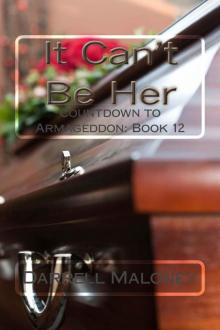 It Can't Be Her
It Can't Be Her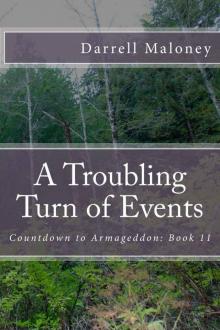 A Troubling Turn of Events
A Troubling Turn of Events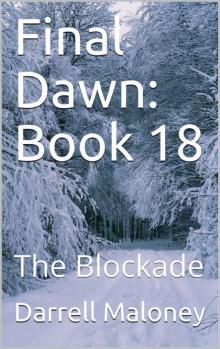 The Blockade
The Blockade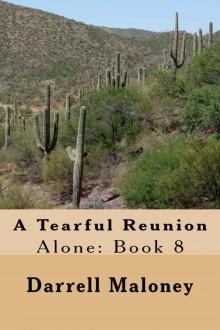 A Tearful Reunion
A Tearful Reunion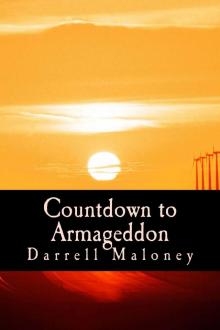 Countdown to Armageddon
Countdown to Armageddon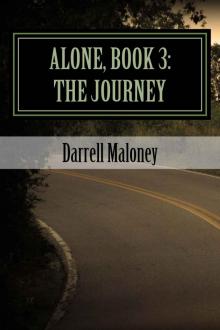 Alone, Book 3: The Journey
Alone, Book 3: The Journey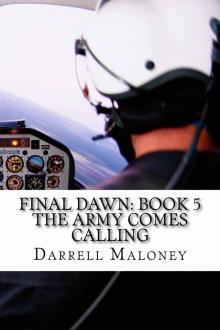 The Army Comes Calling
The Army Comes Calling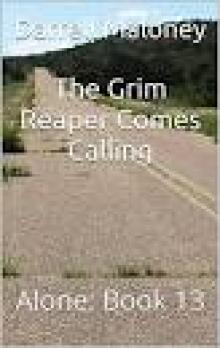 The Grim Reaper Comes Calling
The Grim Reaper Comes Calling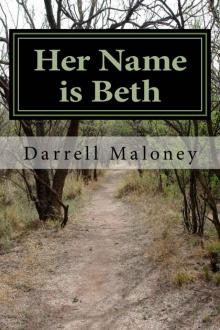 Her Name is Beth: Alone: Book 5
Her Name is Beth: Alone: Book 5 Red: The Adventure Begins
Red: The Adventure Begins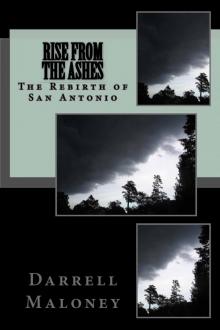 Rise From The Ashes: The Rebirth of San Antonio (Countdown to Armageddon Book 3)
Rise From The Ashes: The Rebirth of San Antonio (Countdown to Armageddon Book 3)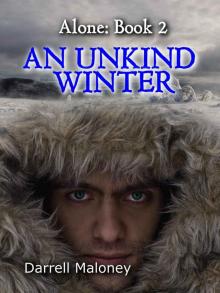 An Unkind Winter (Alone Book 2)
An Unkind Winter (Alone Book 2)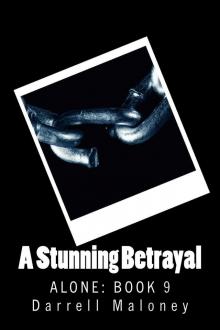 A Stunning Betrayal: Alone: Book 9
A Stunning Betrayal: Alone: Book 9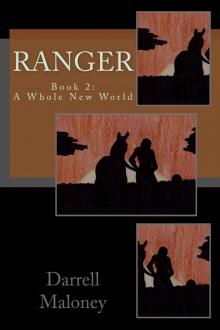 A Whole New World: Ranger: Book 2
A Whole New World: Ranger: Book 2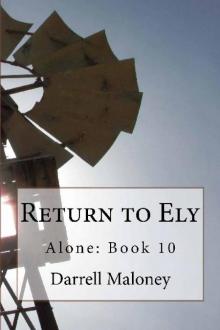 Return To Ely
Return To Ely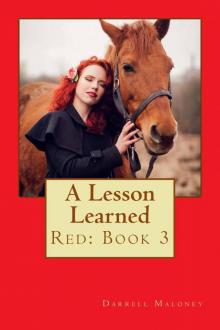 A Lesson Learned: Red: Book 3
A Lesson Learned: Red: Book 3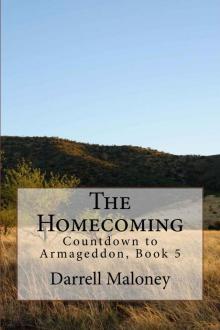 The Homecoming: Countdown to Armageddon: Book 5
The Homecoming: Countdown to Armageddon: Book 5 Final Dawn: Book 12: Where Could He Be?
Final Dawn: Book 12: Where Could He Be?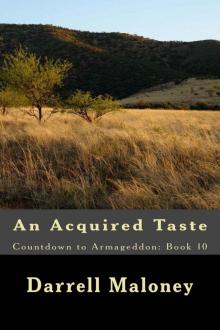 An Acquired Taste
An Acquired Taste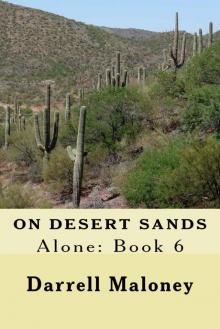 On Desert Sands: Alone: Book 6
On Desert Sands: Alone: Book 6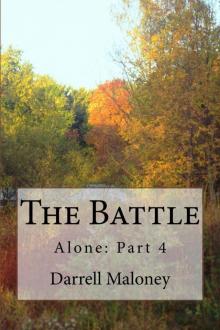 The Battle: Alone: Book 4
The Battle: Alone: Book 4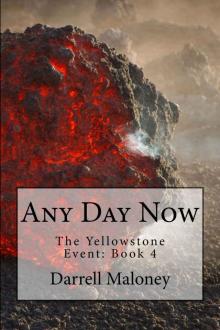 Any Day Now
Any Day Now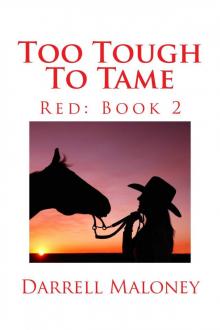 Too Tough To Tame: Red: Book 2
Too Tough To Tame: Red: Book 2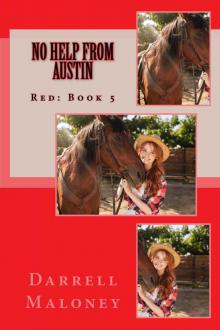 No Help From Austin: Red: Book 5
No Help From Austin: Red: Book 5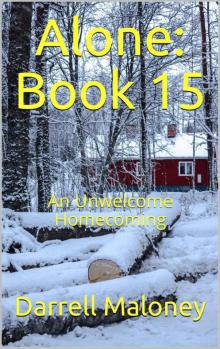 An Unwelcome Homecoming
An Unwelcome Homecoming A New Start: Final Dawn: Book 9 (Volume 9)
A New Start: Final Dawn: Book 9 (Volume 9) A Stunning Betrayal
A Stunning Betrayal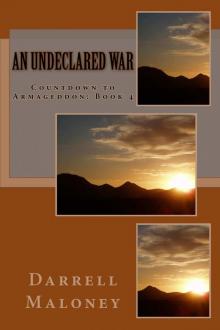 An Undeclared War (Countdown to Armageddon Book 4)
An Undeclared War (Countdown to Armageddon Book 4)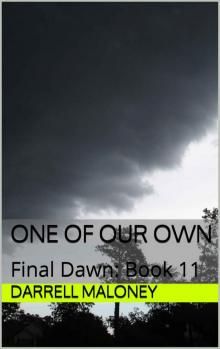 One of Our Own: Final Dawn: Book 11
One of Our Own: Final Dawn: Book 11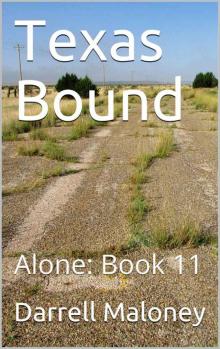 Texas Bound: Alone: Book 11
Texas Bound: Alone: Book 11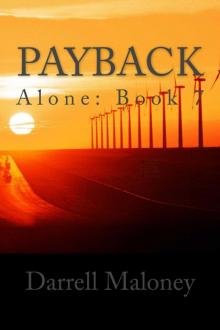 Payback: Alone: Book 7
Payback: Alone: Book 7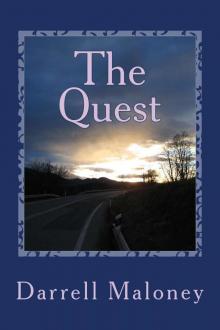 The Quest: Countdown to Armageddon: Book 6
The Quest: Countdown to Armageddon: Book 6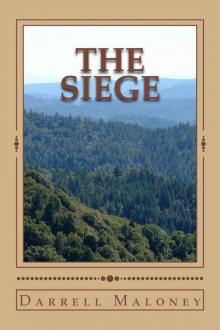 The Siege
The Siege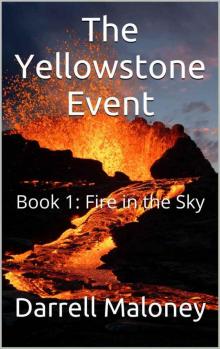 The Yellowstone Event: Book 1: Fire in the Sky
The Yellowstone Event: Book 1: Fire in the Sky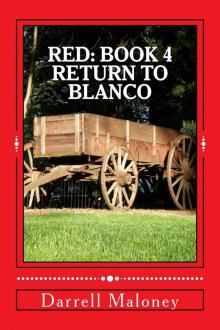 Return to Blanco (Red Book 4)
Return to Blanco (Red Book 4)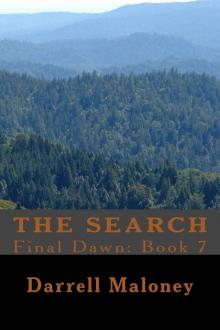 The Search
The Search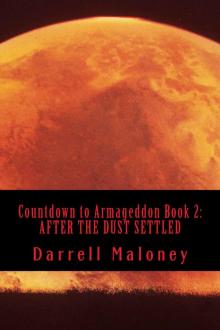 AFTER THE DUST SETTLED (Countdown to Armageddon Book 2)
AFTER THE DUST SETTLED (Countdown to Armageddon Book 2)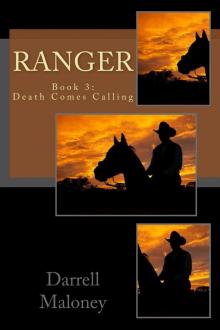 Death Comes Calling (Ranger Book 3)
Death Comes Calling (Ranger Book 3)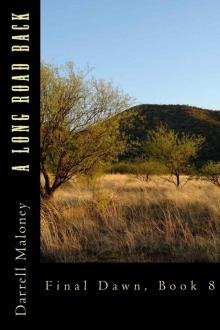 A Long Road Back: Final Dawn: Book 8
A Long Road Back: Final Dawn: Book 8